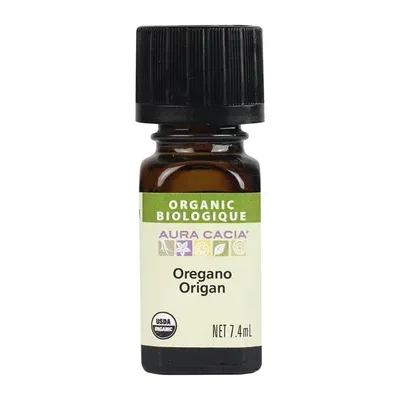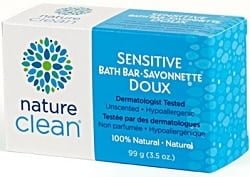Celiac Disease on the Rise?
Celiac disease, an immune system reaction to gluten in the diet, is more than four times more common today than it was 50 years ago, U.S. researchers say.
Dr. Joseph Murray of Mayo Clinic in Rochester, Minn., also found that subjects who did not know they had celiac disease were nearly four times more likely than celiac-free subjects to have died during the 45 years of follow-up.
"Celiac disease has become much more common in the last 50 years, and we don’t know why," Murray said in a statement. "It now affects about one in a hundred people."
In patients with celiac disease, the presence of the protein gluten from wheat, barley or rye triggers an immune system attack, damaging the villi in the small intestine. Villi are fingerlike projections that increase the intestine’s surface area for nutrient absorption, Murray said.
The researchers tested blood samples gathered at Warren Air Force Base in Wyoming between 1948 and 1954 for the antibody that people with celiac disease produce in reaction to gluten. The study, published in the journal Gastroenterology, found young people today are 4.5 times more likely to have celiac disease than young people were in the 1950s.
"Something has changed in our environment to make it much more common," Murray said. "Until recently, the standard approach to finding celiac disease has been to wait for people to complain of symptoms and to come to the doctor for investigation."
Celiac article #2:
Many Celiacs Go Undiagnosed
For people newly diagnosed with celiac disease, an autoimmune disorder of the small intestine, the world can seem upside down.
Whole-wheat bread, granola, bran cereal — staples of a healthy diet — suddenly are poisonous, capable of causing malnutrition, neurological problems, infertility, even cancer down the road. For those with severe cases, ingestion of the tiniest morsel of wheat or gluten, a protein found in wheat, rye and barley, can trigger severe abdominal pains and diarrhea.
Though rare, celiac disease is dramatically on the rise, according to the results of a newly released study by scientists at the Mayo Clinic.
The widely accepted statistic is that one in 133 people has celiac disease, or about 1 percent of the population, but the more alarming statistic is that the majority of people who have celiac don’t know it.
Henry J. Binder, a professor of medicine at Yale School of Medicine, calls celiac an "iceberg" disease.
"Individuals who have been diagnosed because they have symptoms would be the small tip of the iceberg," he said.
Those without the classic digestive symptoms, or with no symptoms at all, represent the bulk of the iceberg that remains underwater.
"There’s the potential for a very large number of individuals having celiac disease," he said.
Celiac disease is four times more common now than it was 50 years ago, according to a major study by Joseph Murray and other doctors at the Mayo Clinic, published in this month’s issue of the journal, Gastroenterology.
The study compared blood samples collected from 9,133 adults between 1948 and 1954 at the Warren Air Force Base in Wyoming to blood samples taken more recently from 12,768 people in Olmsted County, Minn. The samples were tested for antibodies commonly present when a person has celiac disease and has been eating gluten-containing food. In addition to a rise in the disease, researchers discovered that people whose blood tested positive for celiac disease in the 1950s, but didn’t know they had celiac, were four times more likely to die sooner.
The findings raise new questions about whether the general population should be screened for the disease, or if doctors should continue to screen only people who have risk factors for developing the disease — people with a family member who has celiac or people with autoimmune disorders, like type 1 diabetes and thyroid disease. Other symptoms besides the classic digestive ones that could indicate celiac are anemia, vitamin deficiency, infertility, weight loss and bone disorders.
With the sharp rise in the prevalence of celiac disease comes a parallel increase in awareness of the disorder and options for gluten-free living. Celiac disease is easily treated by completely eliminating gluten-containing foods from a person’s diet. A person diagnosed several decades ago had a more difficult time finding gluten-free items at local supermarkets and health-food stores.
Bill Jacobs, president of the Greater New Haven Celiac Group, a support network for people with the disease, got his diagnosis in 1982. He was 32.
After going through myriad tests and getting a misdiagnosis of stomach ulcers along the way, Jacobs’ gastroenterologist discovered the cause of stomach woes — celiac disease.
"I never heard of it in my life," said Jacobs, who lives in Cheshire and has been glutenfree since his diagnosis.
At first, Jacobs spent hours in the grocery store reading labels and looking for foods safe for him to eat.
"The problem was when I got the gluten-free list, it was like going on a scavenger hunt in the store," he recalled.
But in the several decades since his diagnosis, the world has become an increasingly celiacfriendly place. So when Jacobs’ daughter, Keri Jacobs, was diagnosed several years ago at age 13, the transition to gluten-free living was smoother.
"The fact that my dad has it and I see how he has to eat makes it easier," said Keri, now 17 and newly graduated from Cheshire High School.
Keri Jacobs is a classic example of someone who had no symptoms of celiac disease but was screened for it because of her dad.
Her blood work was "off the charts," according to her dad, and a biopsy of her small intestine revealed extensive damage.
Camaraderie is a big thing for people with celiac disease because the condition can be isolating. When Keri and Bill Jacobs discovered Ernie’s Pizzeria on Whalley Avenue, where you can special-order a gluten-free pizza, the experience was emotional.
"It was really nice to be able to go out and have pizza with my family," Keri said.
The need for a celiac network to help newly diagnosed people is what led Jane Trevett to cofound the Greater New Haven Celiac Group with friend and fellow celiac sufferer Beverly Chevalier more than a decade ago.
When the Greater New Haven Celiac Group first met in 1996, there were 15 people. Now the group has 275 members and is growing.
Over the years, Trevett has seen an increase in the quantity but also the quality of gluten-free food.
"When I first started eating gluten-free food, my husband wouldn’t go near it. Now when I make a brownie mix, I can’t keep him away," she said.
Health-food markets such of Edge of the Woods in New Haven and Thyme & Season in Hamden offer extensive gluten-free options. Local restaurants like Ernie’s Pizzeria and Claire’s Corner Copia on Chapel Street have gluten-free menu items. Even some bakeries like Dee’s One Smart Cookie in Glastonbury have tuned into the need.
Hamden-based gluten-free foodie Jennifer Rafferty keeps a blog, www.glutenfreeinspired. com, where she offers local restaurant and product reviews and musings from a gluten-free perspective. Her blog gets about 60 visits per day on average.
Schools and universities are starting to respond to the growing demand for gluten-free options as well.
Robert Landolphi, culinary operations manager at the University of Connecticut, helped create a comprehensive gluten-free plan for students there.
What started as small changes to the menu evolved into the development of a substantial gluten-free program for students and staff members who have celiac.
For Mexican dishes, Landolphi uses corn instead of flour tortillas.
Celiac article #3:
Is This Hidden Allergy Hijacking Your Good Health?
The only thing worse than knowing you have celiac disease is not knowing that you have it-and just one look at the trademark signs of this devastating disorder provides ample evidence of that. Yet research suggests that as many as 97 percent of celiac sufferers will remain undiagnosed… and if you’ve been watching your health spiral out of control with no apparent cause to speak of, then you may just be one of them.1
Celiac disease (CD) is a genetic disorder characterized by an extreme allergic reaction to wheat-and more specifically, the protein gluten and its subfraction gliadin-in your digestive tract. When you have CD, even the smallest amount of gluten in your diet can trigger an immune assault on the lining of your small intestine, giving way to chronic bowel inflammation-and all of the numerous (and potentially deadly) complications that come with it.2-3
Diarrhea, constipation, weight problems, and the poor absorption of critical nutrients-including iron, calcium, magnesium, potassium, B vitamins, and essential fatty acids, to name a few-are just the beginning. In time, CD can affect just about every system in your body. Diabetes, osteoporosis, and abdominal cancer are all linked to celiac disease… and believe it or not, clinical depression is one of the best indications that you’re suffering from an undiagnosed case of this very dangerous condition.4
Making matters worse is the frustrating fact that wheat gluten is everywhere. Sure, there are the usual suspects-like bread, pasta, and cereal. But you’ll also find wheat flour as filler in cold cuts, a thickening agent in sauces, a binding agent in many pharmaceuticals-even dusted on frozen vegetables.5
When it comes to celiac disease, there’s no question that knowing your enemy is half the battle-and that positively identifying your condition is absolutely critical. Because while removing all of these gluten sources from your diet may sound like an impossible task, it’s also a necessary one if you suffer from CD.6
So how can you be sure that wheat is the culprit behind your bad health? Well, an intestinal biopsy is considered the gold standard in testing-but if you’re looking for a less invasive option, there are simple blood tests available, too. In fact, VRP offers one inexpensive option that doesn’t even require a trip to your doctor for reliably accurate results.7
The Celiac Antibody Profile is an easy-to-perform finger-prick blood spot test, complete with all of the necessary materials for both collection and free shipping to a screening laboratory. The results of your test will be delivered within 10 to 14 days of receipt, alerting you of your body’s individual gluten sensitivity profile-and allowing you to start tackling this dangerous hidden health threat with the certainty you deserve.
References:
1. Celiac Disease Statistics Jefferson Adams Published 6/26/06; Celiac Disease facts and figures, University of Chicago Celiac Center.
2. James Braly MD. Food Allergy Relief. 2000.
3. James Braly MD & Patrick Holford. Hidden Food Allergies. Basic Health Publications, Inc. 2006
4. James Braly MD & Patrick Holford. Hidden Food Allergies. Basic Health Publications, Inc. 2006; Canadian Celiac Association "Celiac Disease" Dr. Mohsin Rashid.
5. Dr James Braly’s Food Allergy and Nutrition Revolution 1992; Canadian Celiac Association "Celiac Disease" Dr. Mohsin Rashid.
6. Canadian Celiac Association "Celiac Disease" Dr. Mohsin Rashid; James Braly MD & Ron Hoggan MA. Dangerous Grains. Avery. 2002.
7. James Braly MD & Patrick Holford. Hidden Food Allergies. Basic Health Publications, Inc. 2006; James Braly MD. Food Allergy Relief. James Braly MD 2000.





